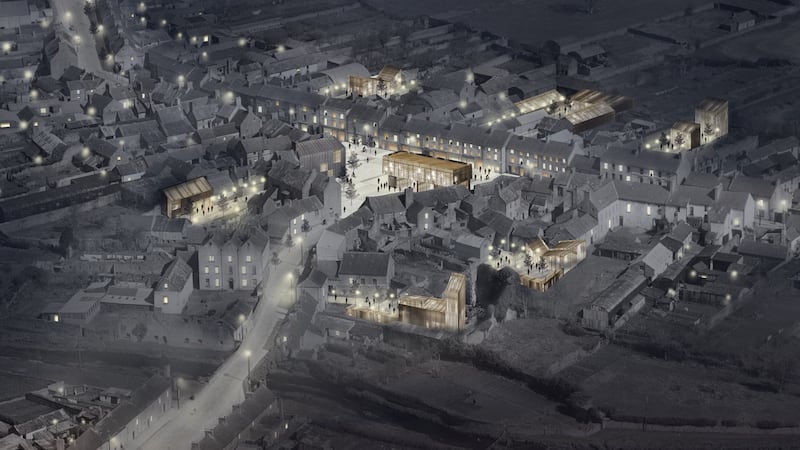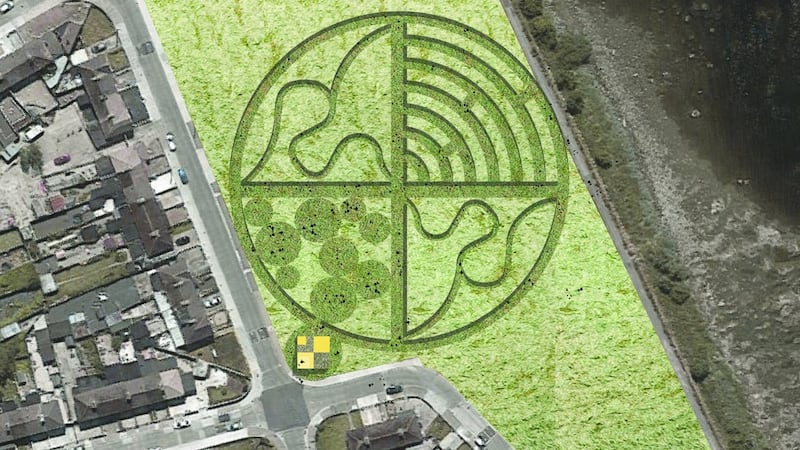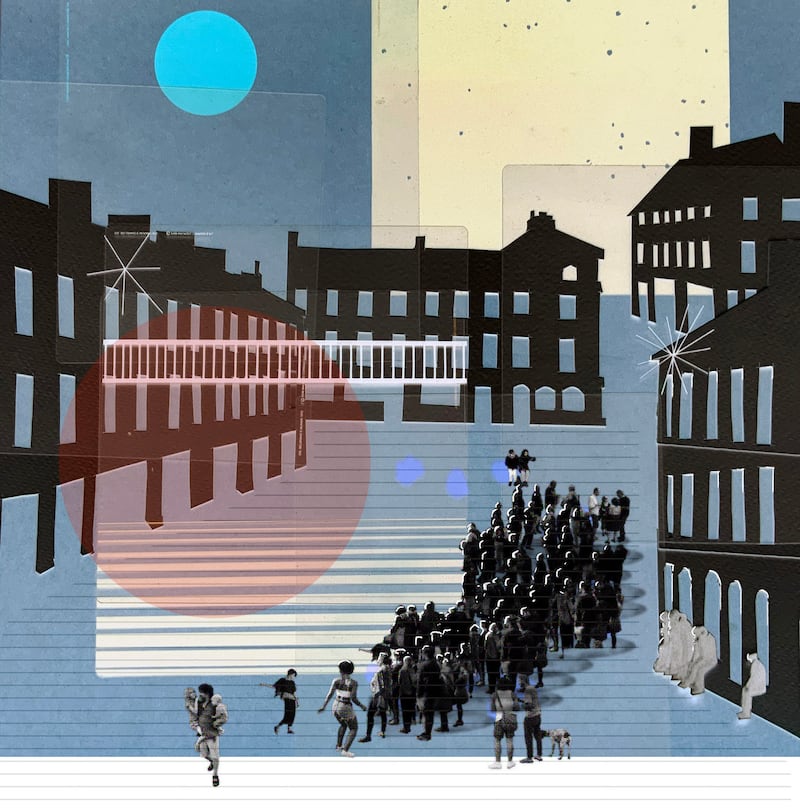After too many conversations about what’s not allowed, we have to start thinking about what is possible, and how to make it happen. We have a clear choice for the months ahead: go outside or go online. But to make live performance possible, we have to understand that thinking creatively also means thinking small. That is the way to make big changes. A year into the pandemic, those in charge are finally getting their heads around the idea of smaller-scale outdoor performance and the spaces where it can take place.
The Arts Council’s Faoin Spéir fund has a total of €250,000 aimed at “inspiring more creative and programmed use of existing public civic spaces in towns around Ireland”. Meanwhile, the Outdoor Public Space Scheme, this time directly from the Arts Department, offers up to €250,000 each to local authorities to create spaces where outdoor events can take place. So with the money to make spaces, and money to programme them, can we look forward to an amazing season of brilliant, and brilliantly safe outdoor performance?
Possibly not. First of all, obtaining permissions to perform can be labyrinthine, with each local authority having different procedures and requirements. In terms of designing spaces, anecdotally, some planners have been reaching for the park bench catalogue, while others are still scratching their heads and saying “but what if it rains?”
There are some hopeful developments. The Clonmel Junction Arts Festival is planning a geodesic dome. The RIOT Sligo conference (March 23rd-24th, riotsligo.ie) aims to explore how culture can reshape place.
Outdoor performance is unlikely to be on the scale of the Electric Picnic and its ilk, but look at the Picnic's smaller stages for a model of how things could, and should, be. Take the Salty Dog, a 40-tonne former trawler boat, transformed as a platform for music. In Zurich, at the Manifesta exhibition in 2016, Tom Emerson created a wooden pavilion on the lake, which included an open air bar, screening rooms and swimming pool. The ideas are there. New ones can form. It's all doable.
"Handled right," says McCullough Mulvin's Niall McCullough, "it could be an explosively brilliant change." The shift to working from home is a huge opportunity for Ireland's smaller towns to flourish. But, as McCullough says, we need more than just "window dressing and timidity". As trained and creative spatial thinkers, architects can be at the heart of a braver change. At Creative Ireland, Tania Banotti agrees. "Let's not waste this chance to do something really creative and beautiful. Let's use the talents of local practices rather than buy off-the-shelf similar furniture across the country."
We invited four architects to explore what the future of outdoor performance spaces across Ireland might look like.
McCullough Mulvin
We chose Mountrath in Laois, as the old main road used to run through it. Now it is bypassed. The town was founded by the Cootes in the 1620s or 1630s and expanded rapidly. It is full of beautiful houses, including 17th century ones, and is relatively intact. There used to be a market house, built on arcades in the square. It was demolished to make way for traffic in the early 1960s.
Our image is intended to show how things could be: a new focus on the town as an urban and social theatre, which is partly new and partly a re-use of all kinds of disused frameworks of habitation and circulation. The old buildings become valued resources. In the image all the upper windows around the square are occupied; the space is repaved in an interesting way – not cobblelock or fussy planters and seats.

The Market House is rebuilt exactly on its original footprint as a contemporary public building of a new type: public hall over an open market and party space. The image also shows developments in the backlands, people building new houses and gardens behind the main facades, adding density and interest to the experience of the town.
Atelier Rae
A Site for Culture proposes the use of scaffolding to create sheltered open-air venues for culture and the arts. Scaffolding in a modular system that can be manipulated into many different shapes and sizes. It is fast to assemble and super strong. Its temporary nature makes this a highly sustainable solution to allow new ideas for cultural spaces to be tested as pop-up places, with low embodied energy.
The building elements can be leased, as is the norm in the construction industry, allowing the budget to stretch further by avoiding large outright capital spends on materials. The structures are wrapped in weather-safe materials, providing shelter from extremes of rain, wind and sun, while remaining open air.
With these large outdoor rooms, the number of occupants can be clearly controlled, in line with Government guidelines on outdoor gatherings. This strategy would work as a space for a variety of cultural uses: performance, exhibition, dining, and gathering etc. With some design ingenuity, we can make radical new places to support culture in our society.
A2 Architects
House of Commons is a call to hands, arms and legs for local authorities and local communities to mutually think about performance – environmental performance as well as community performance. Rather than working on one site we propose the capital spend to be spread across up to 20 sites in each area, so that the message is diffused as widely as possible.
The proposed setting is any green communal space in a housing estate. By not cutting grass in the communal area of a housing estate this spring and summer, the community can create clearings of varying sizes and uses by then mowing shapes and paths. These might be for 100m sprint runs, circular picnic areas, wandering trails for walks, or larger clearings for ball games; while encouraging flora and fauna to return to taller grassed meadow areas for all to enjoy.

Within this, we propose a compact, cost-effective pod to be located at the edge of each grass clearing and accessible to all. The pod offers a combination of uses and functions: a community bench area, a raised planter box, composting lidded bins for organic waste topped with a beehive, and lastly a sedum-roofed tool shed powered by a solar panel that is linked to a storage battery to charge a community-owned strimming machine and lawnmower. The pod is made from robust decking boards that can be easily repaired and painted in colours to suit each community.
Tara Kennedy
Hiding in Plain Sight: We may not realise the resources that already exist in the built fabric of our communities across Ireland. Working on Free Market for the 2018 Venice Biennale and subsequently visiting town squares across Ireland (with Jeffrey Bolhuis, Jo Anne Butler, Miriam Delaney, Laurence Lord and Orla Murphy), we realised, and rediscovered the richness of our market towns.
The visual game PIU E MENO (plus and minus), designed by Giovanni Belgrano and Bruno Munari in 1970, consists of many transparent cards which can be superimposed to create images. This lets us see how our shared spaces could allow us to, as the game suggests, “arrange and superimpose at pleasure”.

Set in any market square, this image explores the opportunities hiding in plain sight: of windowsills as seats, windows as viewing points and perhaps as stages too. It shows that by looking at the surfaces, and adding lines or hooks, an infrastructure can be created that could quickly and easily be used to pop up stages, pop down screens, spaces for stalls, seating and more in our existing squares. I was thinking about uncovering, valuing, adapting, and superimposing on the things we already have.
Collage made using some elements from PIE E MENO, Giovanni Belgrano e Bruno Munari, Corraini Editions. Tara Kennedy, freemarket.ie
Further resources include the RIAI Town and Village Toolkit (riai.ie) and Reimagine from the Irish Architecture Foundation (reimagineplace.ie), where planners can book one-on-one sessions to develop concepts and proposals for the Outdoor Space scheme




















